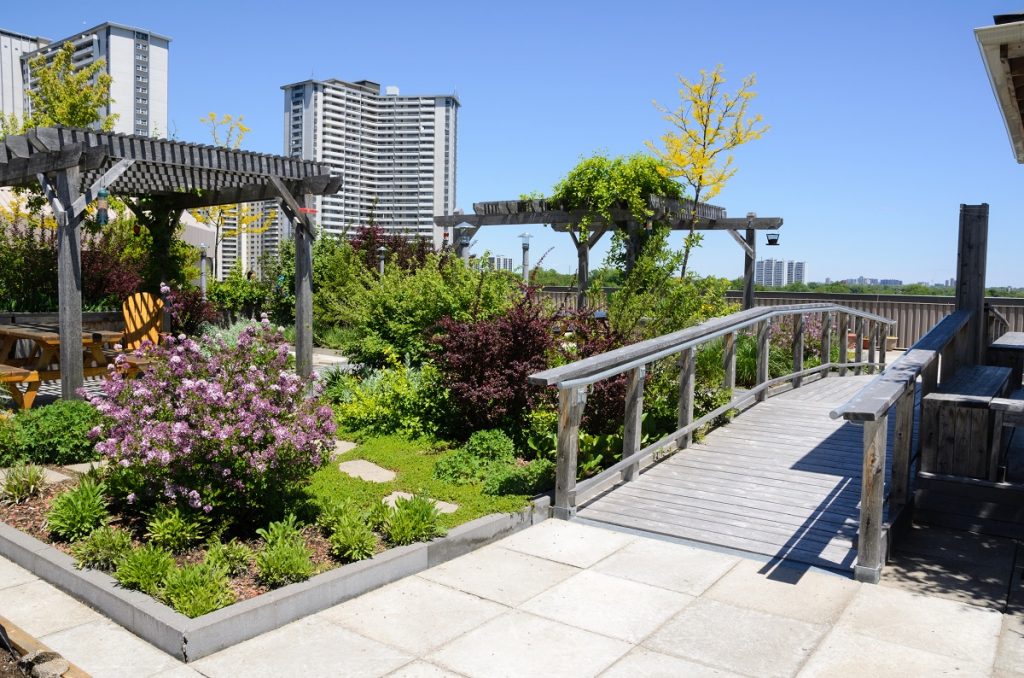Enhancing a community’s urban landscapes is like an oasis for the growing demand for ways to improve our overall health. Nowadays, many cities are becoming more prone to different kinds of pollution, resulting in low-quality air, health, mental, and environmental problems. Thus, making cities more eco-friendly is essential.
Studies prove that exposure to nature and vegetation has a massive impact in decreasing one’s anxiety and increasing productivity. With the growing need for infrastructure and innovation, making cities more eco-friendly sounds impossible.
Well, almost.
The increase in energy usage contributes more to the poor air quality that often plagues the city. This is particularly true for commercial buildings with a bare roof, residential properties without a backyard, or limited spaces. These buildings absorb more heat and then radiate it to our surroundings.
Luckily, most landscape maintenance companies are looking into ways to curb this phenomenon. Maximizing and bringing greenery into a sterile space while reducing energy consumption provides a more sustainable lifestyle for communities.
Thus, the birth of a green roof.
What are rooftop gardens?
Bringing the natural environment into urban places and ultimately reaping its benefits sounds like the greenest innovation yet of a lifetime. By cultivating vegetables, plants, flowers, or even trees, rooftop gardens significantly contribute to cool buildings, reduce carbon emissions, and lessen food transportation’s environmental impact.
The rise and popularity of rooftop gardens here and abroad opened up doors for people to have an eco-friendly lifestyle. Thus, allowing residents and property owners to build green roofs that suit their tastes and need. For instance, they can use these spaces for creating a vegetable rooftop garden for the community to enjoy an aesthetic appeal that is also helpful with workers’ mental health and productivity.
Urban Heat Island
Places with high-density living, such as urban areas and cities, are essentially considered urban heat islands. Commonly found artificial materials in these cities such as concrete and asphalt can easily and rapidly heat up by solar radiation resulting in a massive pocket of hot air. As a result, cooling equipment has to work harder and longer, resulting in increased energy consumption and an enormous strain on energy bills.
How is it beneficial?
The introduction of eco-friendly rooftop gardens allowed a much safer way to cool down the temperature and improve air quality in homes and buildings. These plants reduce heat flow and increase precipitation.
In addition to natural insulation, this greener approach also serves as a natural sound barrier, delays stormwater runoff, filters rainwater, and creates a habitat for wildlife which is equally important in our ecosystem.
A rooftop garden can also provide natural climate control and protection from extreme weather conditions, thus enhancing the structural integrity.
How do you get started?
Consulting with your local council and regulation is always a good place to start once you decided to landscape your rooftop garden. Some communities may prohibit doing such, or you may need special permission, so make it a point to visit them before hiring a contractor.
Once you receive the signal, you can go ahead and hire a professional to assess whether your space can hold a rooftop garden. Congratulations! You can now start planning on the design you want.
What do you need to consider?

-
Temperature
Since the weather in places varies due to location and other factors, make sure to familiarize yourself with them as most roofs are subject to extreme weather and temperature such as rain, wind, scorching heat, snow, and the likes. This is vital as such conditions could shrink or expand your roof membrane, resulting in shortening its lifespan; thus, some people consider waterproofing it as it prevents any damage caused by these conditions.
-
Plants
The choice for plants on your rooftop garden depends on your overall preference, aesthetic needs, and the environment you are in. Certain flowers, vegetables, and trees may not be suitable for the kind of climate that you have. For beginners, low-maintenance plants are always a good option.
-
Expenses
Depending on the size, design, location, and materials used for the construction, a rooftop garden’s cost varies. Keep in mind that building and installing such does not come cheap. Thus, the need to think things through is crucial. However, it’s also a good investment if you’re looking into a more reduced reliance on heating and cooling systems which significantly lowers your energy bill and consumption. Deciding on a vegetable garden will also help in shopping and food expenses. Overall, before making a decision, make sure that you are financially ready.
Increasing and improving the quality of life is imperative nowadays, so whether it’s for pleasure or practical reasons, the long-term benefits of installing a rooftop garden outweigh its installation’s initial cost as it pays for itself. Making it more beneficial for everyone.

